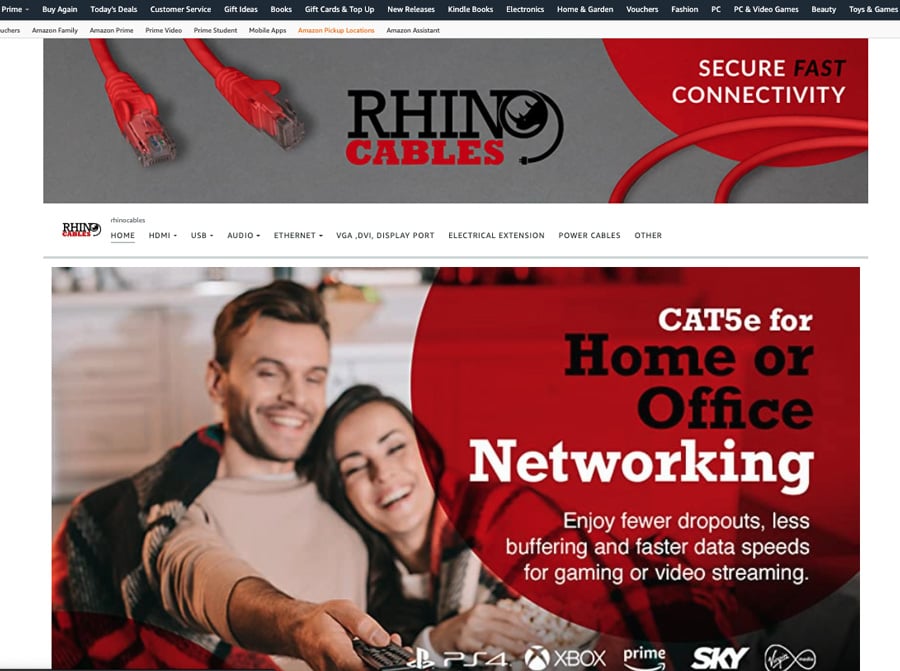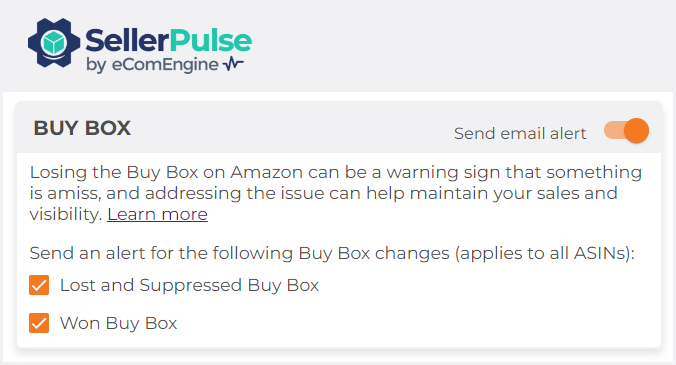Originally published on March 24, 2021, updated March 4, 2025
Menu
Join Our Email List
- Receive our monthly newsletter.
- Stay up to date on Amazon policies.
- Get tips to grow your business.
The newly launched seller, the experienced multinational brand, the brand with one product, the brand with 5,000 products, the brand that has never run an ad, the brand Ellen DeGeneres mentioned on her talk show that's in hot demand.
At eCommerce Nurse, we’ve seen it all: A wide range of brands in different categories, stages, and with various goals. Like most things in eCommerce, there is no one-size-fits-all approach to your Amazon branding strategy.
What works for one business may be completely wrong for another. In the fast-paced eCommerce world, the landscape is always changing. With the global pandemic boosting sales, Amazon reported a 38% increase in sales year over year and netted $386.1 billion to close out 2020 results. Many brands need to maximize their success and growth in this complex world while ensuring their brand representation is accurate and scalable.
Following these tips for developing a successful brand strategy on Amazon can help you efficiently distribute your products, protect your brand, and ensure your costs are reasonable and effective.
Building your brand involves a lot more than just a list of goals or a few ideas about a logo. To craft a brand strategy that includes Amazon, you will first need to think bigger and plan well.
Start by determining your brand’s main objectives, defining your target customer, and building out a loose one-year and five-year plan. Much of this will depend on if you are a new or existing brand and how you are currently set up (i.e. online-only, brick and mortar, or a mixture of both).
You should also think about the support your brand will require. This may involve anything from full seller account management or a single strategy consultation, listing optimization, professional design work or photography, logistics support and supply chain management, translation or international support, Amazon Advertising help, and much more.
Determining what aspects of your business you will need to outsource can scale your spending much easier than random panic purchases. If you need help, eCommerce Nurse is a full-service agency staffed with ex-Amazonians that specializes in Amazon seller and vendor account growth.
We always recommend brand owners and manufacturers protect their brand from day one on Amazon. With millions of sellers and some of the fiercest competition around, you will need to proactively establish and control your brand. Key parts of your Amazon branding strategy include registering trademarks to avoid IP infringement, immediately stopping any counterfeiting, reining in resellers, documenting distribution channels, and creating a cohesive brand experience for customers.
It is essential that brands join the Amazon Brand Registry. To join, you must be a vendor or have a Professional selling account, and you will need to legally apply for trademarks in the countries where you do business. There are many benefits to being brand registered, including expanded marketing opportunities, enhanced reporting, self-service brand protection tools, and more. But be forewarned, you must do your homework here.

Many sellers don’t realize the importance of a trademark search. If you don’t conduct a proper professional search, you may miss third-party trademarks on the Brand Registry that are similar to your brand and it may effectively block your trademark registration. You then end up with a brand that cannot be trademarked. At that stage, you won’t be able to change the brand on your listing, since such change is against Amazon's TOS. Your only legal option, if that happens, would be to open a new listing with a new brand, and lose the reviews.
For this reason, we strongly advise sellers to conduct a professional search in advance, before they start manufacturing. Such search is often included in the trademark application cost.Yael Cabilly
Having some idea of your business's brand identity and guidelines before you sign up to sell on Amazon will be very helpful. You may already have a website and social media presence. You also might have print ads or product packaging ready to go.
Wherever you’re starting from, you should ensure a cohesive brand identity and experience for your customers. Once you are signed up and approved for the Brand Registry, you can create A+ Content and a Brand Store on Amazon. This additional content allows you to create rich product descriptions and an almost-website within Amazon for your brand. This can showcase videos, lifestyle images, address FAQs, and more. Just be sure that any content you create is consistent with your external website and promotes the same customer experience.
Editor’s note: As of June 2023, all sellers on Amazon, whether brand-registered or not, will be able to incorporate videos into their product listings. However, for non-Brand Registry participants, a minimum of three months of selling on Amazon is required prior to video inclusion.
This is an example of a Brand Store on Amazon.co.uk, with many sub-pages and a cohesive shopping experience:

Some considerations for your brand’s content on Amazon may include:
If your brand’s content is misleading or not 100% correct, it can lead to high returns and negative reviews on Amazon. This reflects poorly not only on those particular products, but on your brand as a whole. Ultimately, this can impact brand loyalty and customer trust.
It can also cause low sales and a vicious cycle because Amazon factors product ratings and reviews into relevancy in search and browse. If your product is getting poor reviews because of inaccurate content, possible counterfeit, or other seller issues, your product will be pushed behind other, more successful listings. It may even be removed if it’s problematic enough to cause high returns or very poor customer feedback. This brings us to our next crucial point.
If you are the manufacturer and the sole distributor, you will obviously be able to control the brand experience and all of the content on every platform. But if your product becomes popular or grows to the point where others may be selling your items (either authorized or unauthorized), you will have a much harder time controlling your brand image and reputation.
Businesses that sell to (or via) distributors will have a difficult time controlling distribution, and likewise, their brand. Issues can arise because a brand’s visibility of who the distributor turns around and sells to is quite limited. You may be undercut in price and lose the Buy Box, you may have to deal with sub-par (or inaccurate) content, and much worse.
Need help tracking your Buy Box wins and losses? eComEngine's Buy Box alert lets you know whenever you've won, lost, or had your Buy Box be suppressed by Amazon.
 Regardless of to whom and where your product is being sold, brands can devise specific policies for all distributors and retailers. These policies might outline what they can and can’t do when selling the brand. Brands can outline these policies in a distribution agreement that all distributors and retailers must sign to gain access to the brand. If they refuse to sign, they can’t place any orders.
Regardless of to whom and where your product is being sold, brands can devise specific policies for all distributors and retailers. These policies might outline what they can and can’t do when selling the brand. Brands can outline these policies in a distribution agreement that all distributors and retailers must sign to gain access to the brand. If they refuse to sign, they can’t place any orders.
Within a distribution agreement, the brand can let its retailers know where they can and can’t sell their products. For example, it might say they can sell it in their stores but not on Amazon or Walmart without prior approval. In the US, brands should also consider implementing a MAP (minimum advertised price) policy. Selective distribution agreements are easier to manage in the US. In Europe, brands need to be aware of any possible anticompetitive effects.
It’s best to seek out legal advice if distribution agreements are of interest to your brand. While there will be some upfront costs, it’s worth it in the long run to protect your brand.
Related reading: Share of Voice: What It Is and How to Get More
 In order to be successful on Amazon, you will need to get visibility, positive reviews, and sales momentum. This trifecta is hard to achieve, but it will help you climb the sales ranking and put you on the path to success. You should plan to invest in Amazon Advertising. There are many levers within the ads platform that you can leverage to promote your brand. Some of these include Sponsored Brands, Sponsored Products, display ads (on and off Amazon), and more.
In order to be successful on Amazon, you will need to get visibility, positive reviews, and sales momentum. This trifecta is hard to achieve, but it will help you climb the sales ranking and put you on the path to success. You should plan to invest in Amazon Advertising. There are many levers within the ads platform that you can leverage to promote your brand. Some of these include Sponsored Brands, Sponsored Products, display ads (on and off Amazon), and more.
2023 Update: Amazon introduced Brand Tailored promotions, allowing you to offer exclusive discounts to selected audiences.
Because Amazon is such a trusted retailer, most people have an Amazon account. Take advantage of this by directing your traffic to Amazon. This may mean investing more in Amazon ads and less in Google ads, for example.
If you need assistance with an integrated ad and Amazon branding strategy, contact us. eCommerce Nurse is a full-service agency with a team of experienced, expert Amazon consultants. By following these five tips we have outlined, you can forge ahead with a clearly devised plan and specific goals. While you won’t become a bestseller overnight, you can rest assured knowing your brand is protected and your strategy is tailored and focused on Amazon success.
Originally published on March 24, 2021, updated March 4, 2025
This post is accurate as of the date of publication. Some features and information may have changed due to product updates or Amazon policy changes.
These Stories on Business
14321 Winter Breeze Drive
Suite 121 Midlothian, VA 23113
Call us: 800-757-6840





Copyright© 2007-2025 eComEngine, LLC. All Rights Reserved. eComEngine®, FeedbackFive®, RestockPro®, and SellerPulse® are trademarks or registered trademarks of eComEngine, LLC. Amazon's trademark is used under license from Amazon.com, Inc. or its affiliates.
No Comments Yet
Let us know what you think